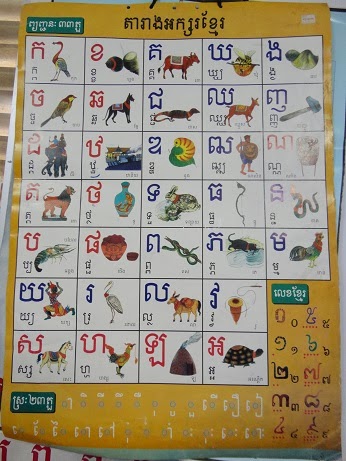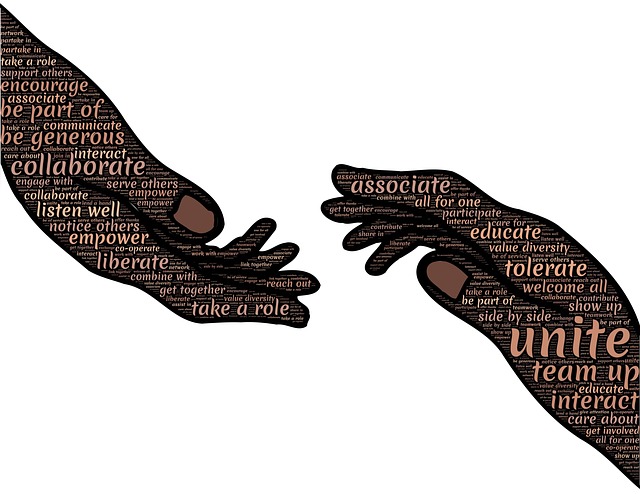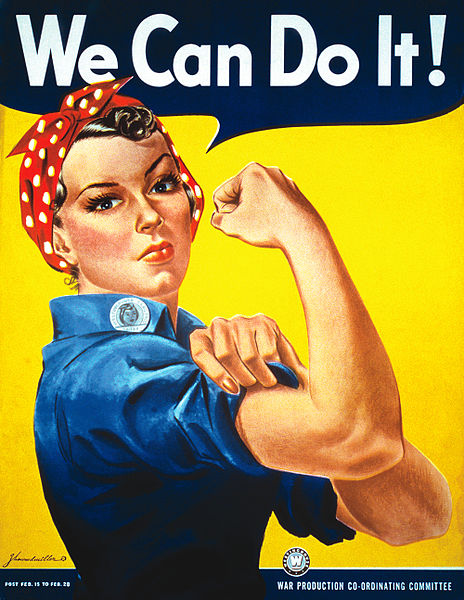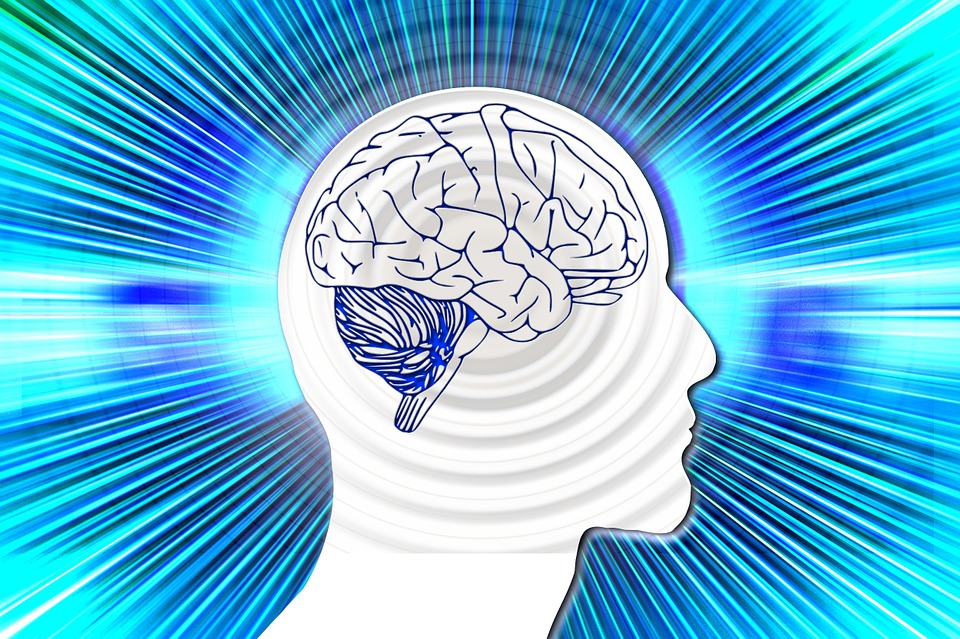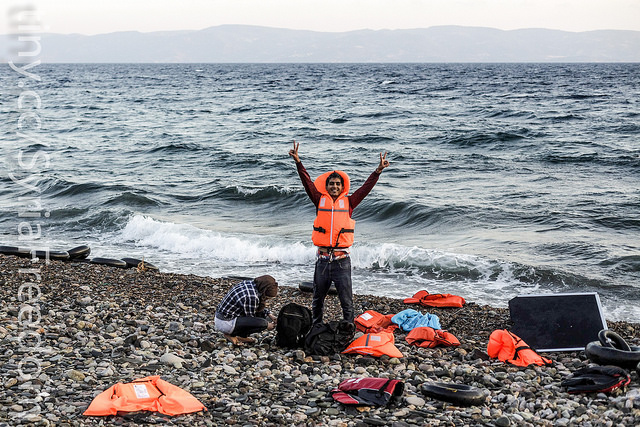English learners are a diverse group entering our schools with a wide range of backgrounds and needs. Many readily develop the necessary language skills and content knowledge, and progress satisfactorily. But others struggle and school presents major challenges. I describe the Mutually Adaptive Learning Paradigm (MALP®), a culturally responsive approach that builds bridges to formal education for these struggling learners.

What do you first see when you look at this image? Some people say “a candlestick.” Others see the silhouettes of two heads. Is there a “wrong” or “right” answer; is there only one answer? No to both questions. This image is an optical illusion, that is, a drawing presenting an image that can be perceived in different ways. What you initially perceived as “the image” is just one possibility.
I begin my discussion with this optical illusion to illustrate that there is not just a single way to understand the world around us, only one “reality.” As with this optical illusion, educators and their students may each see the world in very different ways, based on their significantly different prior learning experiences. This is especially true for struggling English Learners (ELs) who for whatever reason have not fully participated in formal education and have developed ways of thinking and understanding that are anchored in real-world experiences. We, as educators, in contrast, anchor our ways of thinking and understanding the world in formal education. To best address the needs of these students, we must become aware of cultural factors underlying these two different perspectives. Once we develop such an understanding, we are in a position to design and implement instruction that builds bridges to learning in our classrooms.
Struggling ELs
Who are struggling ELs? In contrast to the general EL population whose primary concern is to acquire a new language, struggling ELs face myriad additional obstacles to academic success. Of these many obstacles, I focus here on culturally rooted differences in prior learning experiences that have led to the development of different cognitive pathways than those integral to success in formal education (Cole, 2005). Struggling ELs, of course, are not a homogenous group but rather range along a continuum; some will have had greater opportunities for prior participation in formal education and the development of school-based cognitive pathways or ways of thinking, and others less so. Nevertheless, there are three significant factors that distinguish struggling ELs from those who are more successful. Struggling ELs (1) have not had access to commensurate formal education relative to their age; 2) have low or no literacy skills; 3) are missing grade-level content knowledge; and 4), do not see themselves as learners within a formal educational paradigm. (See Figure 1. Click on the image to make it larger.)
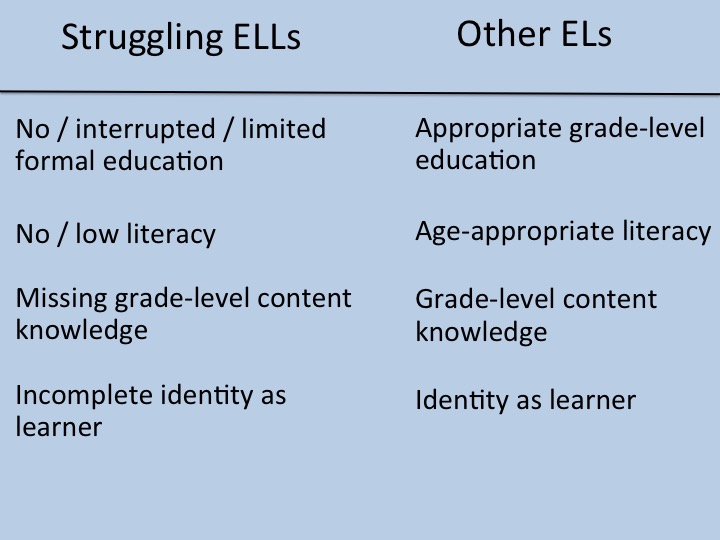
Evident so far in this discussion has been an emphasis on what struggling ELs lack. Such an emphasis is very much a deficit view, and one that, unfortunately, is the prevailing view today. But I now ask, how appropriate is such a deficit view? If we measure struggling learners through the lens of formal education, then yes, they are lacking. But what if we recognize that their “reality” is distinct, that their ways of thinking and perspectives on learning, derived from their prior culturally based learning experiences, are different rather than deficient? Doing so invites a very different conversation.
Culturally Responsive Teaching
An essential portion of this alternative conversation about struggling ELs is the incorporation of culturally responsive teaching (Gay, 2010) into our classrooms. Culturally responsive teaching requires a deep exploration of culture going far beyond the “heroes, holidays, and food” approach (DeCapua & Wintergerst, 2016; Ngo, 2010). A deep understanding of culture allows us to draw on and honor the prior experiences and current knowledge of struggling ELs, experiences and knowledge that may not be (and in most cases are not) school-based ways of thinking and school knowledge. At the same time, we must facilitate the development of their identities as learners that align with our formal educational paradigm.
Unique Learning Needs of Struggling ELs
What does culturally responsive teaching for struggling ELs entail? There are three critical underlying cultural differences that must be understood:
- the roles of literacy and orality;
- the dimensions of collectivism and individualism; and
- essential features of informal ways of learning and formal education.
First, for struggling ELs, their preferred mode for accessing and transmitting information is through oral means rather than through written means. Even when they have basic literacy skills, they are still more comfortable exchanging information and knowledge orally. In our educational system, strong literacy skills are fundamental. Academic success hinges on participatory reading and writing skills, a form of literacy demanding much more than decoding skills (Suárez-Orozco, et al., 2013).
Second, most struggling ELs come from collectivistic (sub)cultures that highly prize interdependence and the interconnectivity of the group. People regard themselves as an inseparable part of a web of relationships, the maintenance of which is central to behaviors and actions. U.S. mainstream culture, in contrast, is a highly individualistic culture that values independence, and the pursuit of individual wants and preferences (Hofstede, 2000; Triandis, 1995). Our educational system reflects and fosters these values by lauding independent work and requiring individual assessment.
And third, informal learning and formal education promote the development of different types of cognitive pathways, given divergent sociocultural processes for learning and teaching, and the types of activities for supporting the development of knowledge and skills (Gavin, Beebe, and Zhao, 2011). Struggling ELs, whose dominant learning has been through informal ways, have experienced learning within their web of relationships and as part of the sociocultural practices of their communities and families (Rogoff, 2014). Learning is rooted in the here and now, with tasks that are concrete, pragmatic, and immediately relevant. Learning to cook, farm, peddle, or any of the myriad sociocultural practices of daily life do not require literacy, prescribed curricula, or tasks removed from every day experience.
Challenges of Formal Education for Struggling ELs
Formal education, on the other hand, is set apart from daily life and is future-oriented, preparing students for life after school. Formal education is literacy-based with fixed curricula, and designed to impart knowledge that has been separated into discrete disciplines and to develop school-based, academic ways of thinking. Students practice and demonstrate mastery of knowledge through decontextualized tasks. To take one example, the most common question asked in classrooms is to define something, as in “What is _____?” (Cazden, 2001) or What is a snake? A correct definition entails students identifying the characteristics that make a snake different from, say, an alligator. Defining draws on abstract characteristics that reflect school-based ways of thinking and organizing knowledge (Flynn, 2007).
Struggling learners find a task such as this strange. In the real world a snake may be characterized as something poisonous or not, but one does not walk around saying a snake is a “limbless, scaly, elongate reptile” (dictionary.com). And, while learners may produce a definition along the lines of “an animal with no legs or arms,” this does not follow the prescribed format of formal definitions. It is this third major underlying difference—the types of thinking and tasks reflecting thinking in informal ways of learning versus formal education—that is the hardest for us to recognize and comprehend. As educators, our daily thinking, both inside and outside of school, has been shaped by school-based ways of thinking, making it difficult to see the other “image” or reality.
Strategies for Helping Struggling ELs Succeed in School
This discussion of three crucial underlying cultural differences leads us to the question of how to help struggling ELs succeed in our educational system. Successfully making the transition to classroom success demands that learners are able to access and transmit information via the written word rather than orally; engage in expected classroom behaviors and academic discourse; and become active participants in a learning process based on literacy and decontextualized tasks for building and demonstrating content knowledge.
Initially, two options occur to accomplish this goal. For one, educators may choose to teach struggling ELs in the ways with which they are most comfortable, namely focusing on the concrete and familiar, and incorporating conventional basic literacy development. While this approach may make struggling ELs successful in a particular classroom, it does not move them towards school success. They are not receiving academic second language instruction in content areas and not necessarily developing school-based ways of thinking and modes of discourse. Other educators may take the approach that current pedagogical practices are sufficient and that it is the responsibility of struggling ELs to catch up and keep up. This will work for some students, particularly if they have a great deal of support, personal motivation, and aptitude, but does not work for the majority as evident in high disengagement and drop out rates in this population (Sheng, Sheng, & Anderson, 2011; Suárez-Orozco et. al., 2013). Neither approach truly addresses the needs of the majority of struggling ELs.
There is, however, a third option, one that creates a bridge to success for struggling ELs. To build this bridge between the learning paradigm of struggling ELS and that of our educational system, culturally responsive teaching must be central. An approach that is in line with having a conversation that acknowledges different perspectives is the Mutually Adaptive Learning Paradigm or MALP® (DeCapua & Marshall, 2011; Marshall, 1998; Marshall & DeCapua, 2013).
The Mutually Adaptive Learning Paradigm (MALP®)
MALP® is a culturally responsive approach that redirects the conversation away from a focus on deficit and remedial to one on different and preparatory. MALP® prepares struggling ELs to participate in formal education while honoring their prior knowledge and experiences. MALP® is mutually adaptive because both educators and struggling learners are called upon to make shifts in their paradigm or their realities.
How does MALP® work? To understand MALP®, we must think of learning as consisting of three separate but related components: conditions, processes, and activities (DeCapua & Marshall, 2011; Marshall, 1998; Marshall & DeCapua, 2013). Each component consists of two elements, for a total of six elements (see Figure 2. Click on the image to make it larger.).
Conditions for Learning
These are important for struggling ELs and must be present before the learning can take place. Struggling ELs come from backgrounds of informal ways of learning. Since most of their learning has taken place outside of formal classrooms, their prior learning experiences have been closely tied to the real world, to the pragmatic, and to concrete tasks with immediately relevant results. The majority of struggling ELs also come from collectivistic (sub)cultures and are accustomed to working together with others.
In implementing MALP®, we need to ask ourselves: Does my pedagogy consistently incorporate material of immediate relevance along with subject matter knowledge? Is my classroom climate a warm, encouraging, and challenging environment that fosters a sense of interconnectedness, that is, being part of a classroom and school web of learning relationships? These are questions that must be affirmatively answered under the MALP® instructional model.
Yet immediate relevance and interconnectedness are two elements not commonly evident in most formal classrooms beyond the very early years of schooling (Paris, 2012). Formal educational is not situated in daily life and practices, but is apart from these, and, the development and/or maintenance of webs of relationships, if they exist, are not seen as central but as auxiliary, and are usually found outside of the curriculum as in sports teams or clubs. Learning in formal education is future-based, predicated on the notion of discrete subject areas and content knowledge (Robinson, 2011). It is learning removed from the real world, where schooling takes place before “life,” where students are expected to be independent learners. Thus, we must consciously ensure that immediate relevance and interconnectedness are evident in our classrooms.
Processes for Learning
These are how people prefer to access and transmit information. Struggling ELs prefer oral transmission; formal education is grounded in literacy. Struggling ELs are accustomed to shared responsibility; formal education demands individual accountability, particularly on assessments. The preference for oral transmission makes the centrality of literacy in our classrooms difficult for struggling ELs. Their familiarity with sharing responsibility, i.e. working together with others to accomplish tasks, makes the emphasis on individual accountability seem peculiar. And, in our educational system, even when group learning is encouraged, individual accountability remains the norm (Weimar, 2013). To transition struggling learners to literacy and individual accountability— essential processes of formal education— we combine them with oral transmission and shared responsibility, the two processes preferred by struggling learners.
In combining the oral and the written, we avoid thinking in terms of listening, speaking, reading and writing as four discrete skill sets. Instead, we see speaking and listening as integral supports for literacy, and use strategies and techniques developed specifically for literacy development. In combining shared responsibility with individual accountability, we provide opportunities for learners to work together that also include sections or pieces requiring learners to work individually. Key is ensuring that the individual accountability piece does not only take place during assessments, but also while learners are sharing responsibility in a learning task.
Activities for Learning
These are the tasks that learners perform to build and demonstrate mastery. These tasks differ greatly in informal ways of learning and in formal education. Weaving a piece of cloth or selling items in the market require pragmatic, concrete tasks that produce immediate tangible results. In formal education, tasks are decontextualized, found primarily in school rather than outside of the school setting, such as the earlier definition question, What is ____? To transition struggling ELs to thinking in school ways and being able to engage in decontextualized tasks, we provide opportunities for them to become familiar first with school ways of thinking and practice school tasks before new language and content are introduced. By starting with familiar language and content, struggling ELs can focus on the task itself, without the additional difficulties posed by new language and content. Once they are familiar with school-based ways of thinking and the new task, then we introduce new language and content.

By implementing MALP® and changing the conversation to one of difference rather than one of deficit, we can effectively transition struggling ELs to our classrooms. (See Figure 2. Click on the image to make it larger.) We are explicitly addressing the mismatch between their ways of thinking and those expected and assumed in our classrooms while we continue to acknowledge and honor what they do bring. MALP® also does not ask educators to ignore or discard pedagogical practices that they know work well with struggling ELs. What MALP® does do is provide a framework to help educators conceptualize what works, what doesn’t, and what they still need to incorporate into the classroom and their teaching (DeCapua & Marshall, 2011; Marshall, 1998; Marshall & DeCapua, 2013). Fully implementing MALP® builds bridges that allow struggling ELs to access formal education. And to assist in doing so, educators use the MALP® Teacher Planning Checklist, reproduced here and available at malpeducation.com.
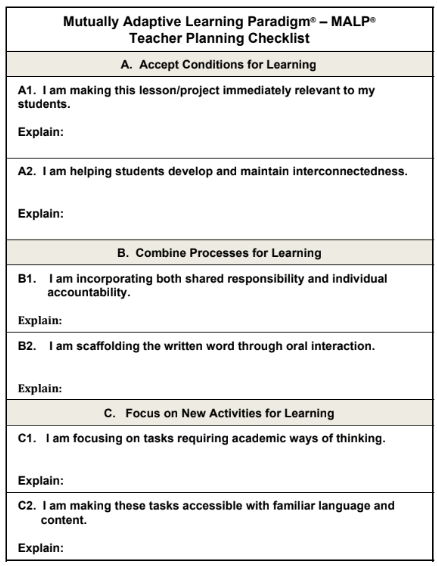
The Checklist mirrors the MALP instructional model as seen in Figure 2. (See Figure 3 for the Checklist. Click on the image to make it larger.) Using the Checklist in preparing and reflecting on lessons provides teachers with a tool for evaluating whether and how well they are incorporating the six elements of MALP. It is essential that all six elements of the three components are included, perhaps not in a single lesson, but in a series of lessons or in a unit because all the elements work in tandem. The Checklist is also a valuable tool when conducting classroom observations.
Conclusion
Although we are all human beings, culture and prior learning experiences shape how we perceive and understand the world around us. Our reality as products and active transmitters of formal education is a different reality than that of struggling ELs. By implementing culturally responsive teaching using the MALP® instructional model, we can more effectively transition struggling ELs to a new and different reality, one in which they see themselves as successful learners in a learning paradigm centered on literacy, school-based ways of thinking, academic discourse, and decontextualized tasks.
You can find more information on MALP at malpeducation.com.
References
Anderson-Levitt, K. (2003). Local meanings, global schooling. Hampshire: Palgrave.
Cazden, C. (2001). Classroom discourse: The language of teaching and learning. (2nd ed.). Portsmouth, NH: Heinemann.
Cole, M. 2005. Cultural and historical perspectives on the developmental consequences of education. Human Development, 48, 195–216.
DeCapua, A., & Marshall, H.W. (2011). Breaking new ground: Teaching students with limited or interrupted formal education. Ann Arbor: University of Michigan Press.
DeCapua, A., & Wintergerst, A. (2016). Crossing cultures in the language classroom. Ann Arbor: University of Michigan Press.
Flynn, J. (2007). What is intelligence? New York: Cambridge University Press.
Gavin, M., Beebe, H., and Zhao, S. (2011). Applying the cultural approach to cognitive development. Journal of Cognition and Development, 12, 37–41.
Gay, G. 2010. Culturally responsive teaching: Theory, research, and practice. (2nd ed.). New York: Teachers College Press.
Hofstede, G. (2000). Culture’s consequences: Comparing values, behaviors, institutions and organizations across nations. (2nd ed.). Thousand Oaks, CA: Sage.
Marshall, H. W. (1998). A mutually adaptive learning paradigm (MALP) for Hmong students. Cultural Circles, 3, 134-141.
Marshall, H.W., & DeCapua, A. (2013). Making the transition to classroom success: Culturally responsive teaching for struggling language learners. Ann Arbor: University of Michigan Press.
Ngo, B. (2010). Doing “diversity” at Dynamic High: Problems and possibilities of multicultural education in practice. Education and Urban Society, 42, 473–495.
Paris, D. (2012). Culturally sustaining pedagogy: A needed change in stance, terminology, and practice. Educational Researcher, 41, 93–97.
Robinson, K. 2011. Out of our minds: Learning to be creative. New York: John Wiley and Sons.
Rogoff, B. (2014). Learning by observing and pitching in to family and community endeavors: An orientation. Human Development, 57, 69-81.
Sheng, Z., Sheng, Y., and Anderson, C. 2011. Dropping out of school among ELL students: Implications to schools and teacher education. Journal of Educational Strategies Issues, and Ideas, 84, 98-103.
Suárez-Orozco, C., Martin, M., Alexander, M., Dance, L.J., & Lunnebald, J. (2013). Promising practices: Preparing children of immigrants in New York and Sweden. In: R. Alba, R., & J.Holdaway. (eds.). The children of immigrants at school: A comparative look at integration in the United States and Western Europe. (pp. 204-252). New York: New York University Press.
Triandis, H. (1995). Individualism & collectivism. Boulder, CO: Westview Press.
Weimar, M. 2013. Learner-centered teaching: Five key changes to practice. (2nd ed.). San Francisco: Jossey-Bass.


